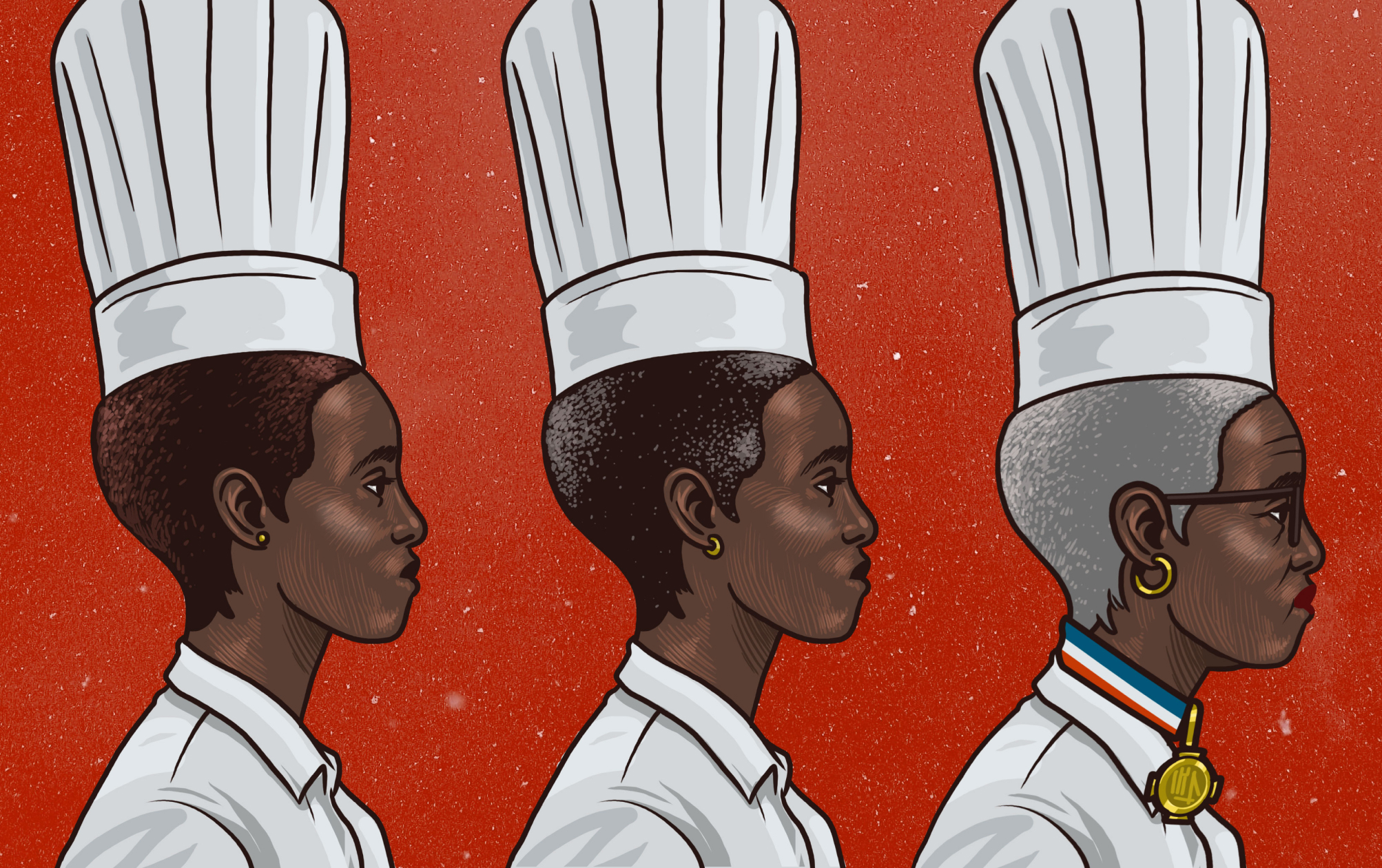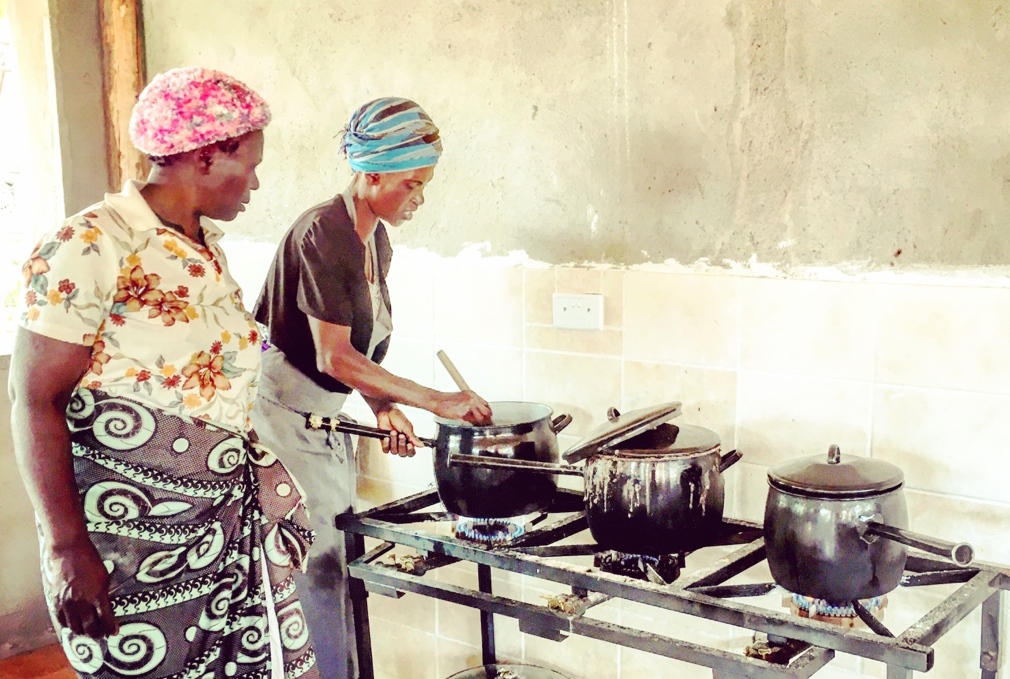Burning Man
In a special interview, René Redzepi explains why he collaborated on the new series Omnivore, and gives MAD the scoop on that mind-bending chile scene
For those of us who care about food—and probably even for those weirdos who don’t—there’s plenty in the new series Omnivore that fascinates. The camel caravans that do the centuries-old work of transporting salt from the bed of Lake Assal, in Djibouti; the ancient practice, still used today, of catching tuna by channeling them through net mazes as they arrive at the Mediterranean to spawn; the ways in which coffee has helped both destroy and resurrect Rwanda.
But what we really wanted to know about was that chile dinner.
In final scene of the first episode, René Redzepi, who co-created the series and narrates it (and, in case you didn’t know, also happens to be the chef of noma and MAD’s founder), turns his restaurant into a hallucinogenic den of warped perceptions, watering eyes, and shocked diners looking as though they are seriously reconsidering their misbegotten choices in life. He does this by inviting everyone in the house—guests and staff–to eat a ‘super-hot’ chile.
Omnivore, which premieres on Apple+ on July 19, is a global expedition into what Redzepi calls “the most important thing in the world”: food. Each of its eight, visually-arresting episodes goes deep into a single ingredient, tracing the way that it has sustained humans and transformed cultures around the world, and exploring the threats it currently faces. By telling these stories, it encourages viewers to see the beauty and connection in food, and therefore to recognize its worth. “The general public needs to be more aware of food–who’s behind it, how it’s grown–to be more curious, more inquisitive,” René says. “It’s not about judging, and we certainly won’t shout at anyone for having different approaches. But maybe [the show] will inspire you to value it more. Maybe you’ll start with a cup of coffee and look at that.”
The first episode in the series focuses on chile peppers, and is shaped by René’s personal connection to the ingredient. When he was a child growing up in Macedonia, the men in his family used to keep fresh chiles on the side of their plates, biting off pieces as they ate, as a way of seasoning the food. The young René was mystified by how they could stand the heat. “I remember watching my uncle Agi taking a healthy bite, and I couldn’t fathom it–how was it even possible?” Rene says. “So I texted Matt (Goulding, the show’s co-producer) something like: what if instead of Jiro Dreams of Sushi, it’s René Dreams of Chile? Then a million ideas came into play, and we boiled it down so that it would finish with me doing a chile tasting.”
Not just any chile tasting, however. On a night when the restaurant was closed, René invited some friends of the house and any staff who wanted to participate to a dinner that would culminate with a chile course. And not just any chile, but a Brut Orange Copenhagen–a variety of ghost pepper, which reaches around 800,000 heat units on the Scoville scale (for comparison, jalapeños top out at 8000). It is among the ‘super-hots” that are considered the spiciest things on earth.
On screen, René harvests the chiles himself in the noma greenhouse, and admits he has some fear about eating them. “I don’t want it, but at the same time, I’m also like, ‘can I take it?’”
He–and everyone else who volunteered for the dinner/torture— soon finds out. As the cameras roll, the staff bite into their peppers, then serve the same chile, served alongside a mild, grilled one, to their guests. The lights and colors begin to shift, the camera angles bend, a violin ensemble brought in specially for the occasion amps up the intensity of its playing. Tears and noses start flowing, and we watch as shock registers on most of the faces. A guest reaches for a glass of milk and gulps greedily; a server, overcome, slides down along a wall and retches. “One guest,” René recalls, “Took it in one bite, chewed on it for 10 seconds, and then suddenly, just stood up, like she had seen a ghost, and went straight outside to ask for medical help.”
The guest was fine, as was everyone else, including René, whom we see in close-up as tears stream down his face. But it wasn’t easy. “As I was biting into it, I actually felt more scared than the first time I jumped off a cliff, with the water 10 meters down,” he recalls.”If it wasn’t for the fact that there was a giant camera crew, and 80 people staring at me, I probably would have chickened out.”
His first reaction was panic. “I was kind of trembling, and on the inside, it was a volcano of fear and doubt.” Gradually—too gradually— the burn started to fade. “With each passing minute, you start to feel more like, ‘I did it,’ and then, at the end, you get this incredible high that I’ve never felt before.’
But the chile wasn’t done with him yet. The worst came in the middle of the night, when he woke with what he describes as two or three hours of ‘dreadful’ cramps. “I took a pillow and slept on the bathroom floor,” he says, “because I felt like at any moment, something could explode.”
To be honest, he doesn’t think he would do it again. But he is glad to have captured the adventure as a kind of extreme example of the show’s main message. “That’s the power of food,” he says. “Those magical moments where we sit together to eat, and try new things. It connects us.”




